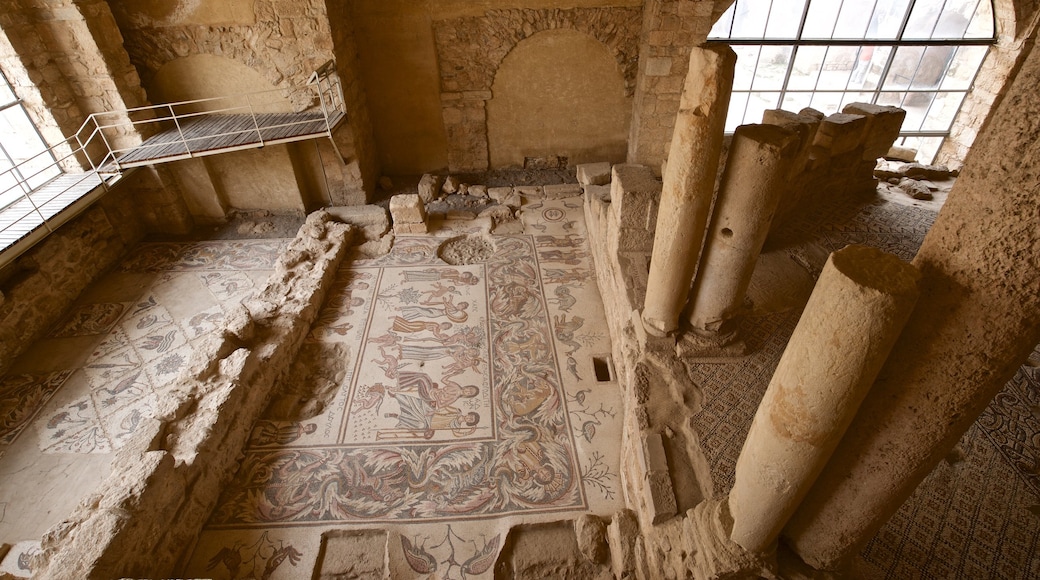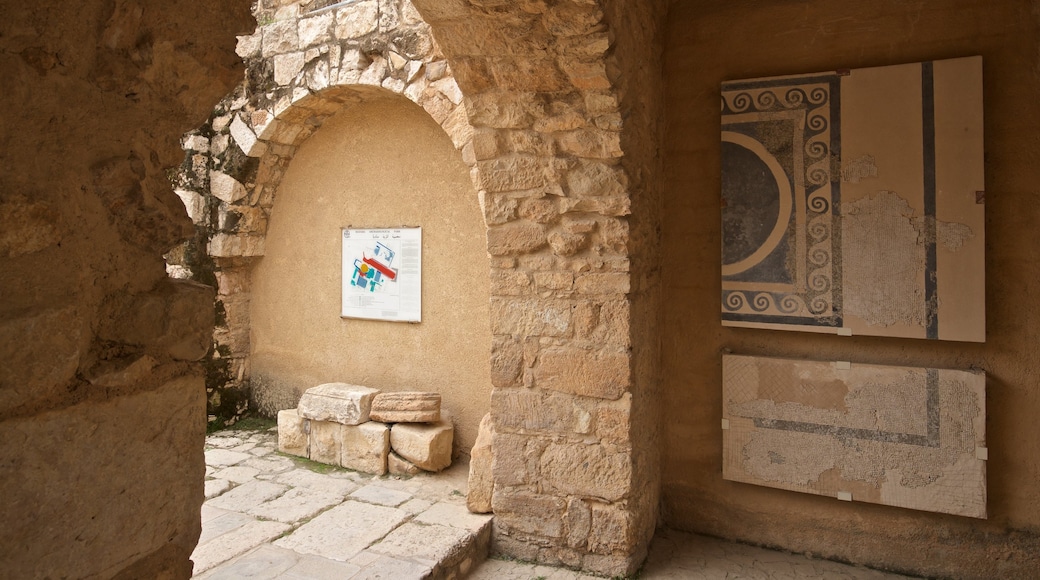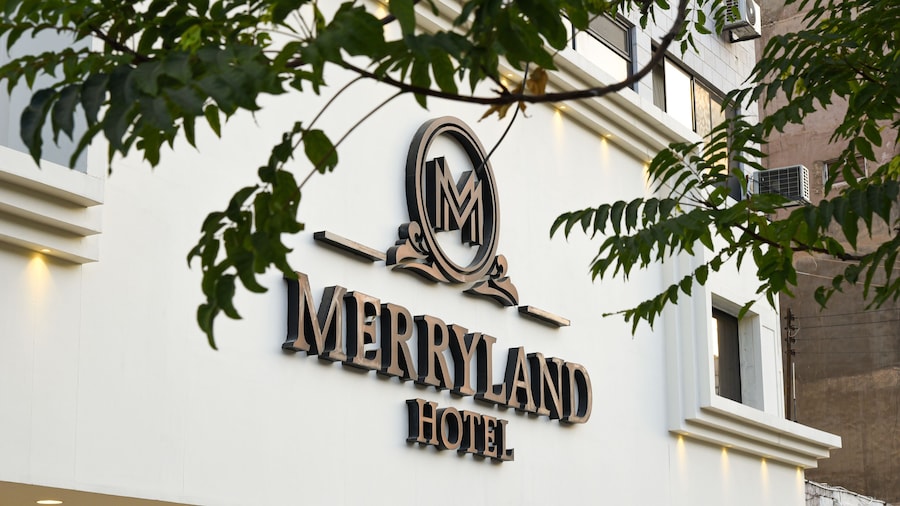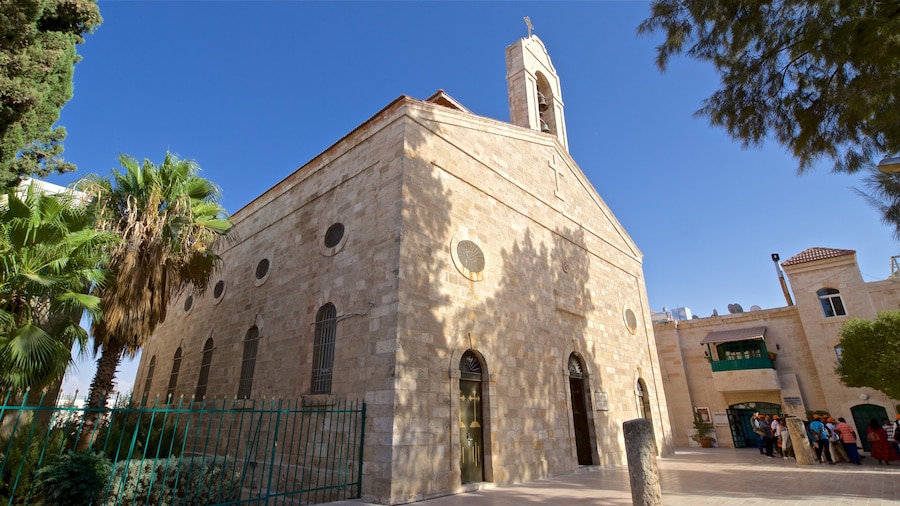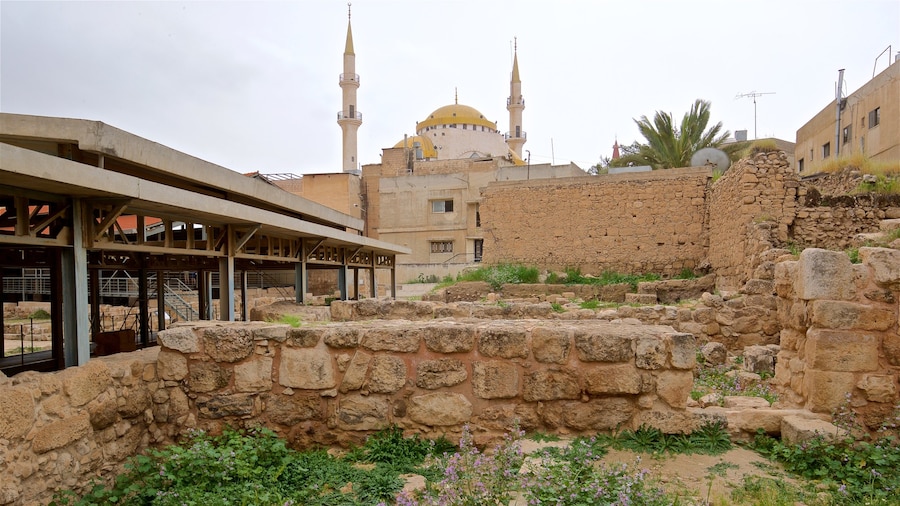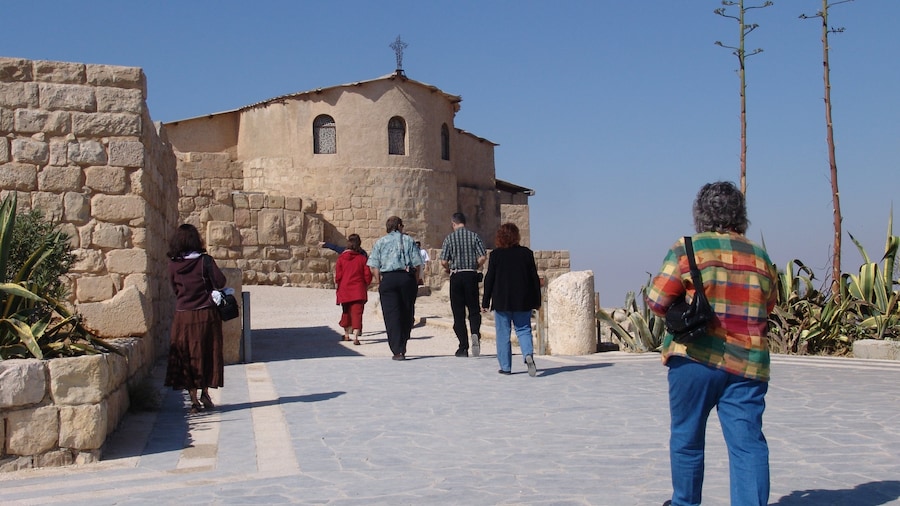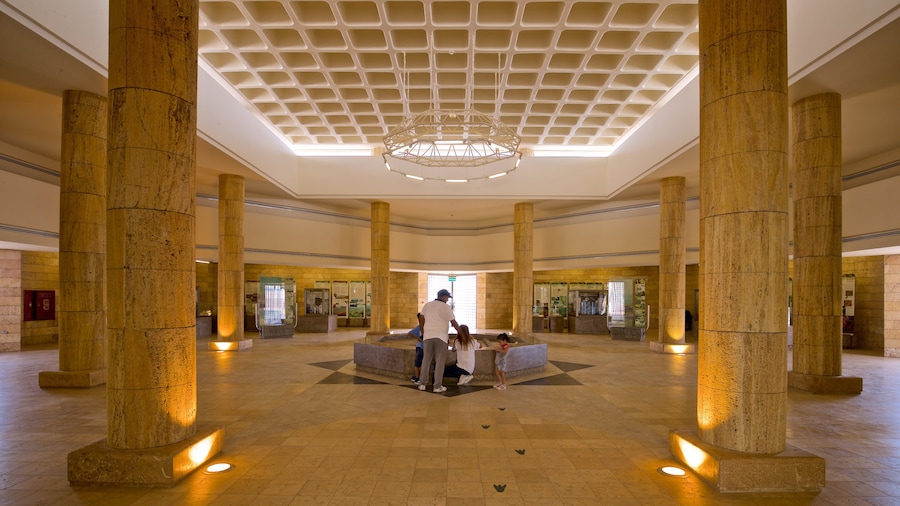Madaba Archaeological Park showcases a series of ancient mosaic floors that once adorned important buildings from the Byzantine and Muslim eras. Having been hidden under a row of private dwellings, most ruins were not unearthed until a few decades ago. Excavation work is still ongoing, but you can now visit the site and admire the treasures.
While the first of these mosaics was discovered as far back as 1887, the private property remained in the same family for decades and could not be excavated. Instead, the Department of Antiquities set out to purchase the row of neighboring houses on the site and gradually succeeded in turning the whole row into an archaeological complex. The partially excavated site was opened to the public in 1987 and apart from mosaics also showcases lonian and Corinthian columns and Byzantine-era altars and colonettes.
The first archaeological treasure to have been uncovered here is the central mosaic of an ancient church. This masterpiece is believed to date back to A.D. 767 and is of dazzling geometric design. Note how the three concentric circles, set within a large square of interlacing circles, depict the change of seasons.
The church was built atop the Hippolytus Hall, an early 6th-century Madaba mansion which itself was built on an even older structure, a circular Roman temple. The hall derives its name from the middle section of its mosaic, which depicts figures from the Greek tragedy of Phaedra and Hippolytus. Let your eyes scan the upper image, which shows Adonis, Aphrodite and Eros from a more famous myth. If you know your Greek mythology, see if you can also find the daughters of Zeus, the Three Graces, representing joy, charm and beauty.
In the open courtyard of the complex, pause a while to also admire the impressive mosaics from Hesban, Ma’in Qastal and Mount Nebo. One of these, a 1st-century B.C. mosaic from the hilltop palace of Machaerus, is believed to be the country’s oldest. The palace was built by Herod the Great near the Dead Sea.
Entrance to Madaba Archaeological Park in Hussein bin Ali Street is included in the Jordan Pass, although you can also pay for a ticket and a guided tour in cash.
